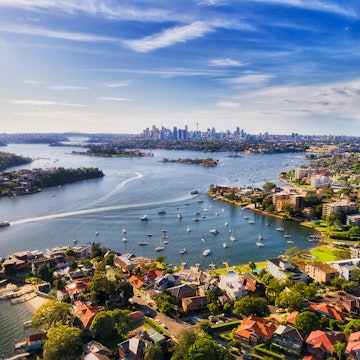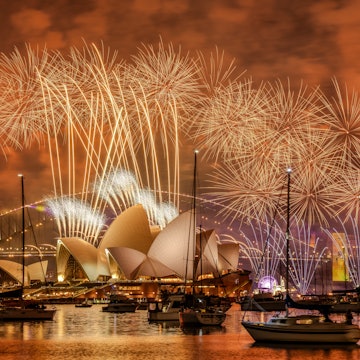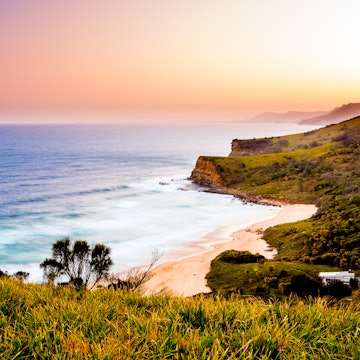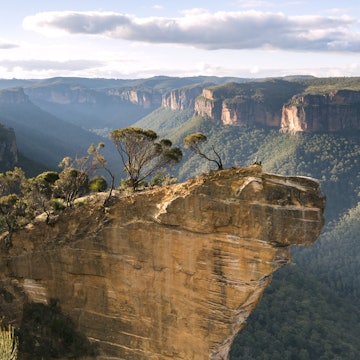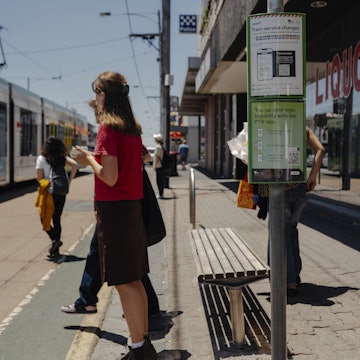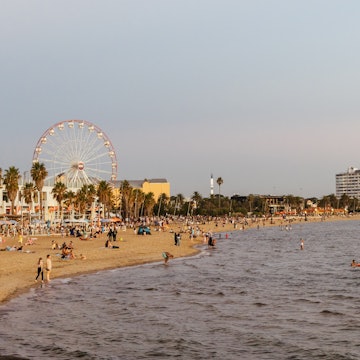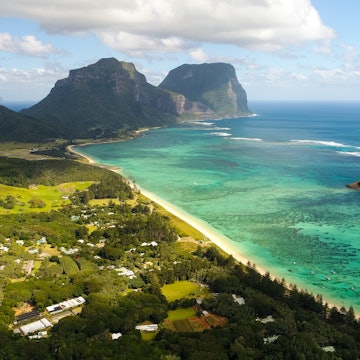

A road trip is a highlight of a visit to Australia, but there are other great ways to travel too. Travelerpix/Shutterstock
Australia is the sixth-largest country in the world, with very different regions and climates. Deciding where to go – and how to get there – requires some serious planning.
At first glance, flying and train fares in Australia look expensive (and a lack of competition does mean there are few bargains), but when you compare car rental, insurance, fuel and accommodation costs, a flight from Sydney to Perth is suddenly a lot more appealing.
If you don't have time to spare, you will probably end up taking some domestic flights to cover large distances in Australia. Alternatively, you can focus your trip in one region. Deciding which one will depend on your interests, and the season.
When deciding on the best way to get around Australia, weigh up how much time you have, what level of comfort you require, and the carbon footprint you want to leave behind....
Short on time? Book some internal flights
Flying is the only way to do more than one state on a shorter stay. Australia's main domestic airlines service major cities and key tourist sites – like Yulara for Uluru Kata-Tjuta National Park – with regular flights. Major players are Jetstar, Qantas and Virgin Australia. The earlier you book, the better the airfare.
Traveling by long-distance bus is a great budget option
Australia's extensive bus network is a reliable way to get between towns and cities, but distances are often vast, so be prepared for long days or nights. Most Australian buses are equipped with air-conditioning (essential in summer), comfortable seats and toilets; all are smoke-free, and some have wi-fi and USB chargers. Look into hop-on hop-off fares, which give you more flexibility. Some operators also offer discounted fares for seniors, students and children.
The main bus companies in Australia are Greyhound Australia, Firefly Express, Integrity Coach Lines (in Western Australia), Premier Motor Service (NSW) and V/Line in Victoria, which runs a mix of buses and trains.
Another way to get around by bus is on a tour. Some offer the whole package, including accommodation and meals; others are less formal options to get from A to B and see the sights on the way. Popular outfits running coach tours include AAT Kings, Adventure Tours Australia, Autopia Tours and Untamed Escapes.

Explore Australia on an epic train journey
Long-distance rail travel in Australia is something you do because you really want to − not because it's cheap, convenient or fast. That said, trains are more comfortable than buses, and there's a certain "romance of the rails" that's alive and well in Australia. The most notable long-distance rail journeys in Australia are the Indian Pacific between Sydney and Perth, the Overland between Melbourne and Adelaide, Great Southern between Brisbane and Adelaide, and The Ghan between Adelaide and Darwin via Alice Springs.
Intra- and inter-state trains operators include Queensland Rail, which runs the high-speed Spirit of Queensland service between Brisbane and Cairns; NSW TrainLink from Sydney to Brisbane, Melbourne and Canberra; and V/Line within Victoria, which links up with coach connections into NSW, SA and the ACT.
Road-tripping is a quintessential Australia experience
Whether you're focusing your visit on one state or several, exploring Australia by road is a very popular way to discover this vast nation. For 4WD (or motorcycle) adventures, you'll also need specialist skills, guidebooks, maps and equipment.
Choosing whether to hire a vehicle or buy one will depend on the length of your stay and how far you’re traveling.
Here are the pros and cons to consider in the hire vs buy debate.
Hiring a car or camper means you've got a reliable vehicle
For a shorter trip, car rental is probably more cost-effective – you’ll get a newer, safer and more reliable vehicle. If you have any issues, you get roadside support, and your costs are fixed at the daily car hire rate. Large rental companies have offices in major cities and airports, and most require drivers to be over the age of 21 (sometimes 25). It’s slightly more expensive to do a one-way hire.
Campervans are also available for rent, which would cover some of your accommodation costs. You still need to pay to overnight at campsites or find designated spots where you can free camp.
Australia-based companies that hire campervans include Apollo, Britz, Hippie Camper, Jucy, Maui, Mighty Campers, Spaceships and Travelwheels. To compare car hire deals, go to CarHire.com.
All the usual advice applies for car and van hire. Read the contract. Understand the small print, including accident excess cover (you can buy your own separately, but you may need to put down a large "holding" deposit with the car hire firm). Make sure all your drivers have the appropriate driving licenses and travel insurance. Always thoroughly inspect the vehicle before leaving and note any pre-existing damage. Given the scale of Australia, you will probably want "unlimited kilometers" as you’re most likely going to travel big distances. Also find out if you can take the vehicle on unsealed roads (yes they'll know if you do).
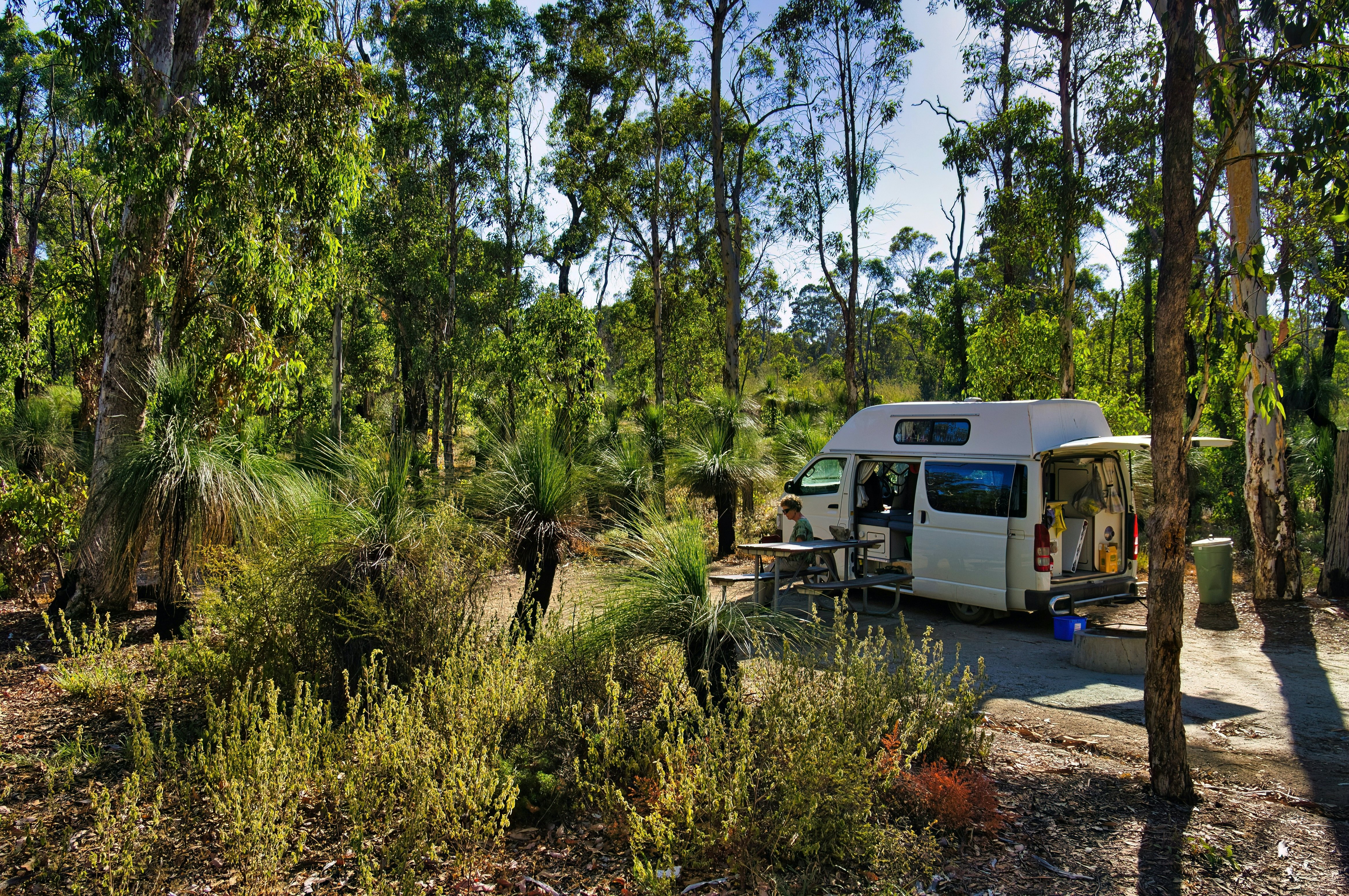
Buying a car or a van is be best for longer trips
Buying your own vehicle gives you the freedom to go where and when your mood takes you and may work out cheaper than renting in the long run. The downsides of DIYing are the admin costs and repairs.
When you buy a vehicle in Australia, you need to transfer the registration (Aussies call it "rego," of course) into your own name within 14 days. Each state has slightly different requirements. When selling a vehicle, you need to advise the state or territory road-transport authority of the sale and change of ownership name. If you just don’t change the registration, you’ll still be liable for subsequent fines and future registration certificates.
Sellers are required to provide a roadworthy certificate when transferring registration in most states. If the vehicle you're considering doesn't have a roadworthy certificate, ask for one before you agree on the price. This can cost $100 but will save you money on unknown repair costs. Road transport authorities have lists of licensed vehicle testers. Note: registering a vehicle in a different state from the one it was previously registered in can be time-consuming and more expensive, something to be aware of when planning to sell at the end of your trip.
It's prudent to have a vehicle checked by an independent expert before you buy it, and state-based automobile clubs (for example, the Royal Automobile Club of Victoria) offer vehicle checks. Road transport authorities (RTAs) have lists of licensed garages you can book directly.

Five common driving hazards you need to know
There are a lot of things to think about when hitting the road in Australia. Here are five risks you need to keep in mind.
1. There may be animals on the road, particularly at night
Many Australians avoid traveling once the sun goes down because of the risks posed by nocturnal animals on the roads. Kangaroos are common on country roads, as are cows and sheep in the unfenced outback. Kangaroos are most active around dawn and dusk and often travel in groups – if you see one hopping across the road, slow right down, as its friends may be just behind it. If you injure an animal while driving, you can call the local wildlife rescue line, which is sometimes signposted en route.
2. Drive slowly and carefully on dirt roads in the countryside
Unsealed road conditions vary wildly depending on the road and the weather. Cars and vans perform very differently on dirt when braking and turning corners. Don't exceed 60km/hr (37mph) – if you go faster, you won't have time to respond to a sharp turn, animals on the road or an unexpected pothole. A wet dirt road means mud and can quickly become impassable – something to keep in mind if traveling in tropical northern Australia during the summer "wet season" (November to April).
3. Look out for "road trains" on the highways
A lack of rail infrastructure in Australia means you’re likely to cross paths with road trains (trucks with two or three trailers stretching for as long as 50m) on the highway. Overtaking there is risky. On single-lane roads in more remote places, get off the road when a truck approaches; they don’t slow down for cars. Stones or debris can clip your car as it passes, so get as far out of the way as possible.
4. Fill up with fuel at every chance in remote areas
In cities and towns, service stations are plentiful, but distances between fill-ups can be huge in the countryside – pay attention to your fuel gauge and those yellow road signs announcing the next roadhouse. Filling your tank whenever you can is the best precaution, especially if you need to take a diversion thanks to a flooded road or some other weather-related event. Electric recharging spots are popping up all over Australia, making hybrid and electric road trips a viable alternative.
5. Do not ignore tiredness when driving
Be wary of driver fatigue; driving long distances (particularly in hot weather) can be utterly exhausting, and falling asleep at the wheel is a very serious risk. Stop and rest regularly − do some exercise, change drivers and have a coffee. Do not drive if you’re feeling drowsy. As the Aussie road safety slogan goes: drowsy drivers die.

Drive responsibly and minimize your impact
If you’ve committed to buying a car or van and driving around Australia, there are some ways to minimize your environmental impact on your journey:
Ensure your vehicle is well-serviced and tuned.
Travel lightly and drive a little slower to reduce fuel consumption.
Stay on designated roads and vehicle off-road tracks (if you’re 4WDing).
Don't drive on walking tracks, and avoid driving on vegetation. Cross creeks only at designated areas.
Always take all your rubbish if you’ve been camping overnight. Leave not trace.
Road trip around Australia on this 3-month-long itinerary
You have a 90-day tourist visa and want to see all of Australia, right? It’s not possible to see everything, but you can conceivably do both coasts and the outback if you’re prepared to keep moving (ideally taking turns behind the wheel with travel companions if you're driving this route).
I suggest you begin in Perth. Drive the west coast via Albany (to the south), then up to Broome via Ningaloo and the Pilbara and over to Darwin. Turn south through Alice Springs and detour via Uluru. Continue straight down the Stuart Highway to Adelaide, then make your way to Melbourne, either inland or via the more scenic coast. Now you’ve got about a month to six weeks to get to far north Queensland via the beaches of southern New South Wales, the waterfalls inland from Byron Bay and the Daintree rainforest north of Cairns. If you skip Sydney and Brisbane (you’ll be dusty by now, and finding places to park is a pain), you can always pop back via bus or plane after you’ve offloaded your vehicle – which has just had an extra 20,000km (12,400 miles) added to its mileage.






